|
Navigation
OCB3034
Main Page
FIU
Home
FIU
Marine Biology Home
Dept.
Biology Home
Frank
Jochem Home
E-Mail
|
Layers of
the Earth
-
Earth:
built by distinct layers: inner core, outer core, mantle, crust; the crust
is the thinnest layer

-
Lithosphere:
outer rigid „shell“ of Earth
-
Asthenosphere:
warmer, plastic (flowing) underlying layer of mantle
-
Continents
are „floating“ on plastic layers: Alfred Wegener‘s theory of continental
drift (1915), proven in the late 1960‘s by deep-sea sediment cores
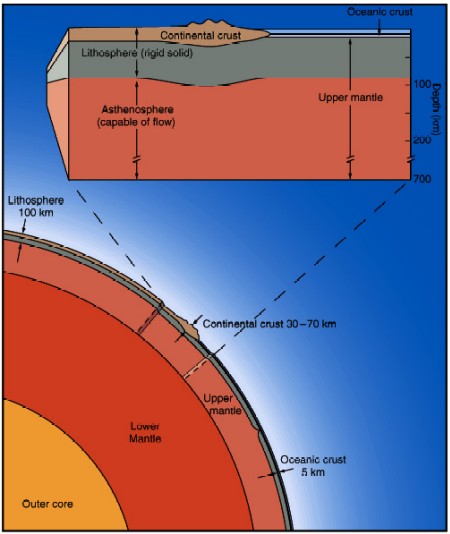
-
Tectonic
plates: Earth‘s surface is composed of several
drifting plates, comprising both continents and sea floor
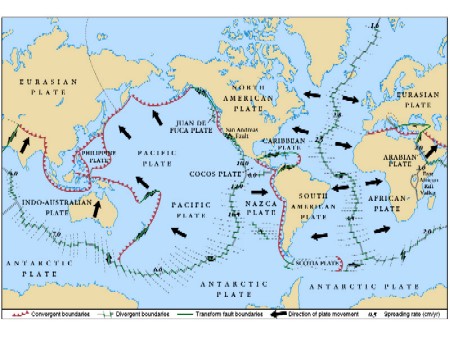
-
Heat
from Earth‘s interior causes convection cells within magma
-
Mid-ocean
ridges: hot magma breaks through lithosphere
and „pushes“ lithosphere to both sides; plates move away from ridges
-
Deep-sea
trenches are subduction
zones: two plates collide due to opposite
drift directions, one plate dives underneath the other; the subducted plate
material is melted into the magma again
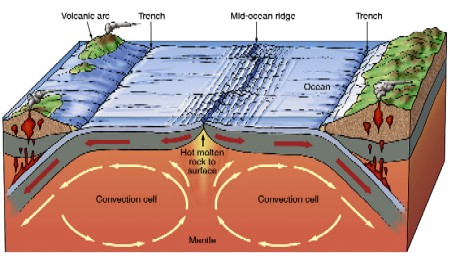
-
Ring
of fire: plate borders can be seen by plotting
earth quakes or vulcanic activity, which occur at plate boundaries
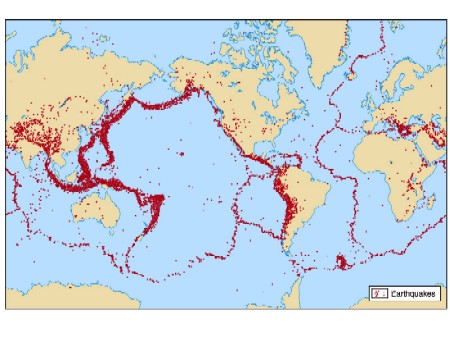
-
Origin
of oceans
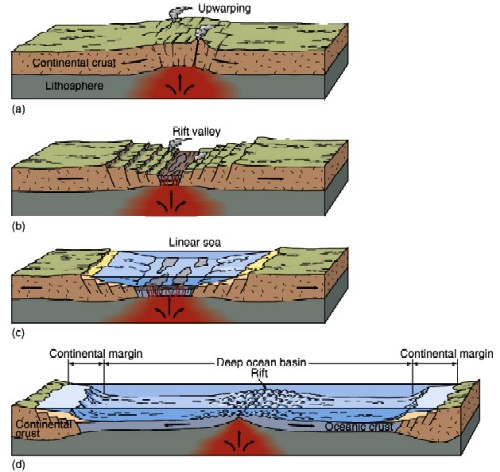
-
Origin
of volcanic islands on top of hot spots
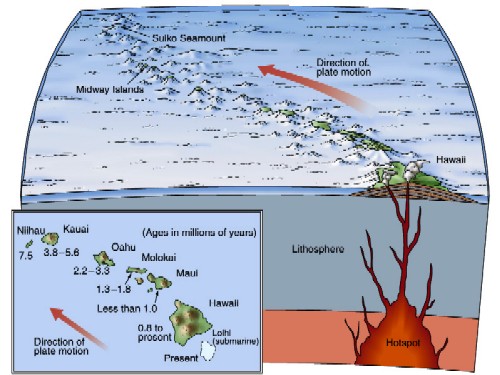
The Jigsaw Puzzle of
the Continents
-
Pangaea:
the original Earth‘s land mass, surrounded by the ocean Panthalassa (the
ancient precursor of the Pacific Ocean)
-
Laurasia
& Gondwanaland: evolved by the split-up
of Pangaea ca. 200 million years ago�Laurasia = today‘s Europe, Asia, and
North America; �Gondwanaland = today‘s Africa, South America, India, Australia,
Antarctica
-
Tethys:
separated Laurasia and Gondwanaland; precursor of today‘s Mediterranean
Sea
-
Atlantic
and Indian Oceans: new oceans created by the
movement of continental plates, still continuously enlarging
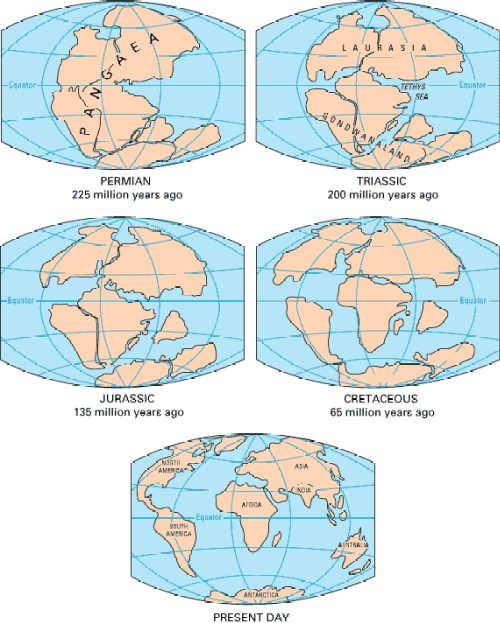
Whereas Alfred Wegener (1880-1930) tried to bring together today‘s land
mass margins, the puzzel can be nicely solved by working with the 2000
m depth lines (Sir Edward Bullard, 1965).
|







